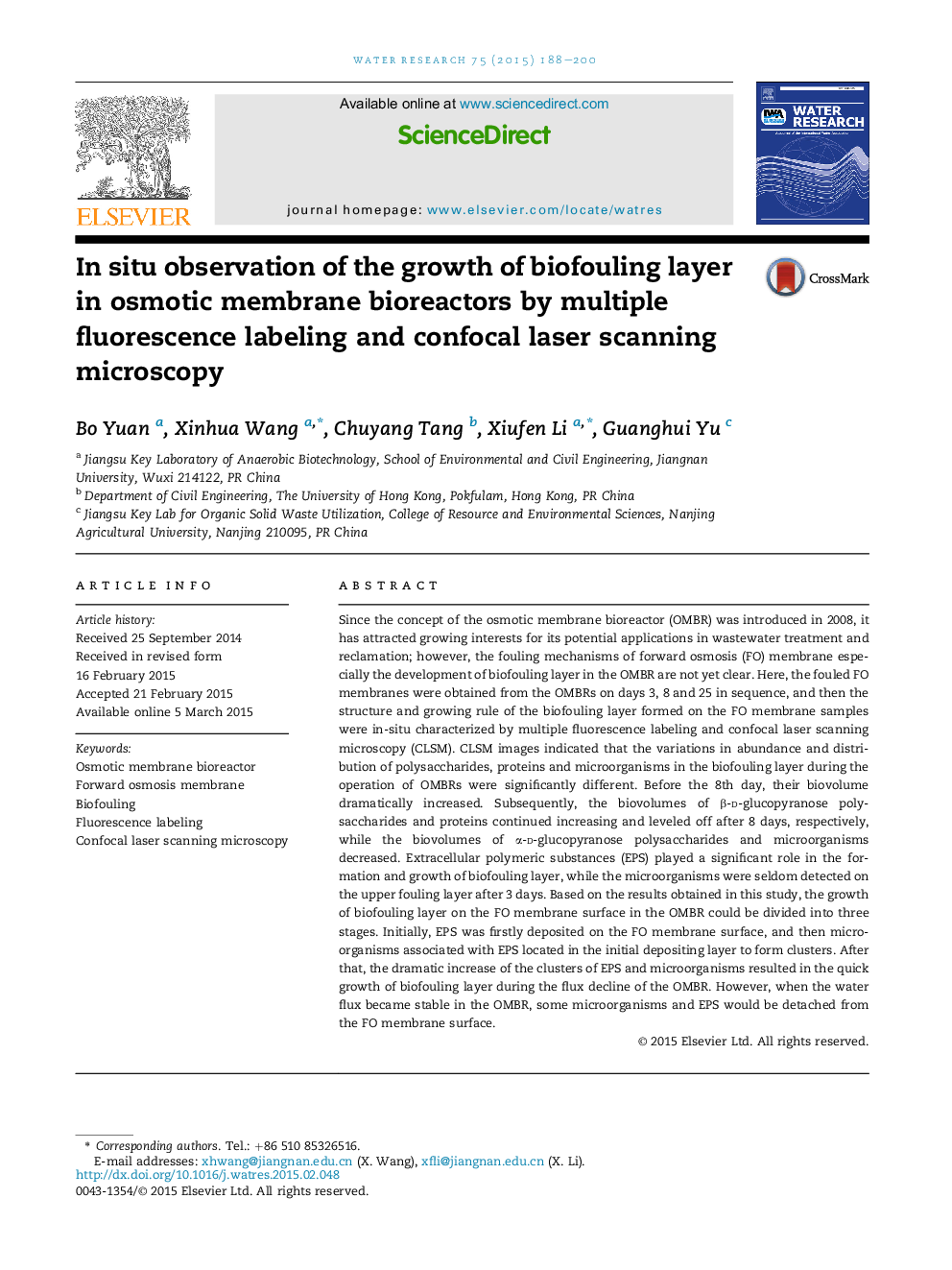| کد مقاله | کد نشریه | سال انتشار | مقاله انگلیسی | نسخه تمام متن |
|---|---|---|---|---|
| 4481209 | 1623093 | 2015 | 13 صفحه PDF | دانلود رایگان |
• EPS played a significant role in the formation and growth of biofouling layer.
• Microorganisms were seldom detected on the upper biofouling layer after 3 days.
• The development of biofouling layer in OMBRs could be divided into 3 stages.
• Microorganisms associated with EPS located in the initial layer to form clusters.
• Biofouling layer grew quickly in the flux decline and slowly during the stable flux.
Since the concept of the osmotic membrane bioreactor (OMBR) was introduced in 2008, it has attracted growing interests for its potential applications in wastewater treatment and reclamation; however, the fouling mechanisms of forward osmosis (FO) membrane especially the development of biofouling layer in the OMBR are not yet clear. Here, the fouled FO membranes were obtained from the OMBRs on days 3, 8 and 25 in sequence, and then the structure and growing rule of the biofouling layer formed on the FO membrane samples were in-situ characterized by multiple fluorescence labeling and confocal laser scanning microscopy (CLSM). CLSM images indicated that the variations in abundance and distribution of polysaccharides, proteins and microorganisms in the biofouling layer during the operation of OMBRs were significantly different. Before the 8th day, their biovolume dramatically increased. Subsequently, the biovolumes of β-d-glucopyranose polysaccharides and proteins continued increasing and leveled off after 8 days, respectively, while the biovolumes of α-d-glucopyranose polysaccharides and microorganisms decreased. Extracellular polymeric substances (EPS) played a significant role in the formation and growth of biofouling layer, while the microorganisms were seldom detected on the upper fouling layer after 3 days. Based on the results obtained in this study, the growth of biofouling layer on the FO membrane surface in the OMBR could be divided into three stages. Initially, EPS was firstly deposited on the FO membrane surface, and then microorganisms associated with EPS located in the initial depositing layer to form clusters. After that, the dramatic increase of the clusters of EPS and microorganisms resulted in the quick growth of biofouling layer during the flux decline of the OMBR. However, when the water flux became stable in the OMBR, some microorganisms and EPS would be detached from the FO membrane surface.
Figure optionsDownload high-quality image (242 K)Download as PowerPoint slide
Journal: Water Research - Volume 75, 15 May 2015, Pages 188–200
